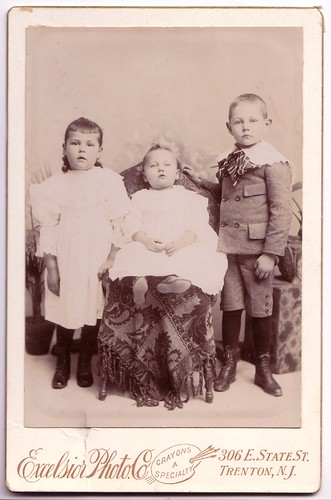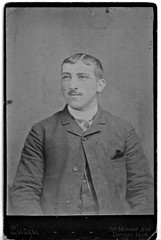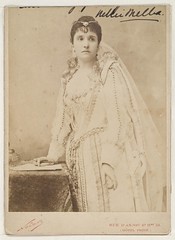
|
| Cabinet Card
|
In the 1860s the popular standard portrait image format Carte de Visite was slowly replaced by the larger Cabinet Card. In that period the technique of making both image types was the same, based on the sepia colored albumen prints.
"The "Cabinets" measured 4½×6½, more than twice the size of the C.D.V.'s, and Family Albums were now made to take two "Cabinets" to each page. It was said that the larger prints became necessary to meet the expanding size of the crinolines. In 1875 the "Panels" had arrived. They were twice the size of the "Cabinets" and measured 8½×6½. They were used chiefly for family groups, for the family was also expanding."[1] The Cabinet Cards and Panels reached their peak of popularity in the 1880s. In the 1890s the images got a more neutral image tone and were most likely produced on a matte collodion, gelatin or gelatin bromide paper [2] instead of albumen paper. But the invention of shutters with instant mode and their application on new types of hand cameras gradually moved the people's preferences from professional studio portraiture to snapshot photography by amateurs.
Notes
Links

|
| Cabinet Card
|

|
| Cabinet Card
|

|
| Cabinet Card
|

|
| Nellie Melba, image by Nadar
|




